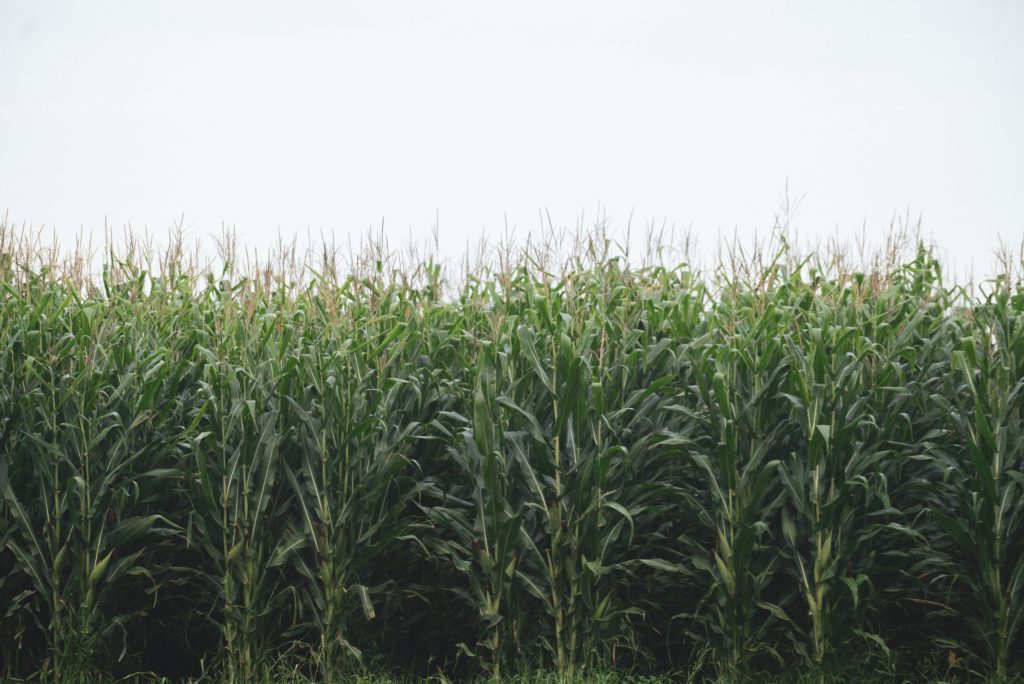The future of food

Did you know that 36% of global cereal production was used to feed livestock to meet human demand for food in 2016?
This 36% is likely to increase as the world population grows, with older adults aged 60 and over being the fastest growing sector of people in the world.
The Food and Agriculture Organization and World Bank predict the human population to grow to 9.2 billion people by 2050. With this growth in population, global agricultural production levels are expected to increase 60-70% by 2050 to meet human demands for food.
This change in population and increased demand for food should be taken seriously. Beef cattle need eight to 10 kilograms of feed to produce one kilogram of meat. That means that for every 100 calories fed to animals, only 25 calories of meat or dairy for human consumption is produced from the animal. As the population grows, more livestock will be needed to meet humans’ demands, and more livestock and crops require more land.
By 2050, arable land, or the land suitable for farming, will only be 0.14 hectares — a decrease from the 0.42 hectares available in 1960. With the demand for food increasing, large amounts of product needed to feed livestock, and a lack of land to farm food on, there are several changes that will take place on a global scale to meet food production needs.
How will this change food production? Will there be new methods of farming? Will we somehow find more land? Does technology hold the answer?
One article asserts that 3D-printed meat, cell-grown meat, plant-based proteins, and edible insects will grow in popularity among younger adults in the future. New forms of protein and food development will emerge. Older adults, who have lived entire lives accustomed to certain dietary habits, will be less likely to adopt these new foods, but they will still experience differences in the way food is produced.
As the older adult population grows, companies will create more products targeted and advertised towards older adults. Marketing strategies today tend to favor younger adults from ages 18-49, and less than 5% of advertising dollars are targeted towards audiences 35-64 years old, and even less to older adults aged 65 and older.
Companies in varying countries around the world have been focusing on catering productions towards adult populations. One article mentions a German baby food company, called Hipp, that found that a quarter of their consumers were older adults, so Hipp morphed their practices to be inclusive of its older population. Hipp is not the only company to implement this shift. A number of different baby food and formula companies have shifted their marketing strategies towards older adults.
Another study out of Finland aimed to understand older adults’ attitude towards packaged meals. It found that older adults thought packaged meals did not contain enough nutrition, and that nutrition facts need to be easily distinguished on food packaging. This tends to be one of the biggest factors that affect adults’ attitudes towards the brand; if the packaging isn’t great, then consumers are more likely to buy a different brand the next time they go to the store.
What do older adults want from their food?
87% of American consumers over the age of 65 want to have a healthier diet. Older adults tend to pick up healthier habits later in life.
35% of young boomers eat whole grains on most days while 44% of older adults eat whole grains.
21% of young boomers are eating omega-3 foods or supplements while 30% of older adults are taking them.
Older adults’ desire for healthier lifestyles is evident, but there are multiple limitations for many adults. A study from AARP in 2014 found that nearly 10 million older adults experience food insecurity. Despite wanting to eat healthier, these individuals did not have the funds or the access to do so.
Although we will be seeing changes in the ways that food is produced and marketed to us, the tastes of older adults will mainly stay the same. That said, here are a few local resources that can help you eat a healthier diet at a low cost
- Vindeket Foods
- This is a nonprofit organization that is open to all. It aims to eliminate food waste by partnering with the community to gather excess, outdated foods that are still consumable before they are thrown out. The organization is also non-profit, so if you cannot afford to pay, you do not have to. You can make a small donation for your purchases or donate some of your time. Vindeket Foods is open Sundays from 12–3 p.m., Tuesdays from 2–7 p.m., and Thursdays from 11 a.m.–1 p.m.
- Food Bank For Larimer County
- These food banks require a certain monthly income to receive their services. The requirements are listed on their website and provide additional programs for older adults. The Fort Collins Fresh Food Share Pantry is open from 10 a.m.–3 p.m. Tuesday through Saturday.
- Esh’s Grocery Market
- Esh’s is a local, family-owned discount grocery store that sources overstocked, repackaged, seasonal, and close-dated items for those on a tight budget and those who love to find a great deal.
ABOUT THE AUTHOR
Grace Weintrob is a junior majoring in Communication Studies with a minor in Stage, Sports, and Film Production at CSU. She is currently working as the digital media intern for the Columbine Health Systems Center for Healthy Aging.





